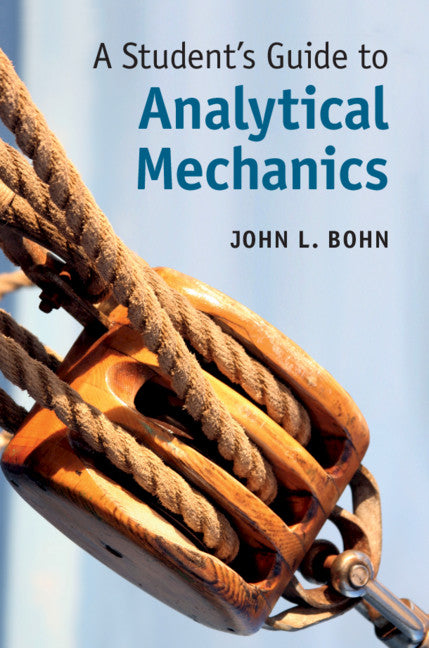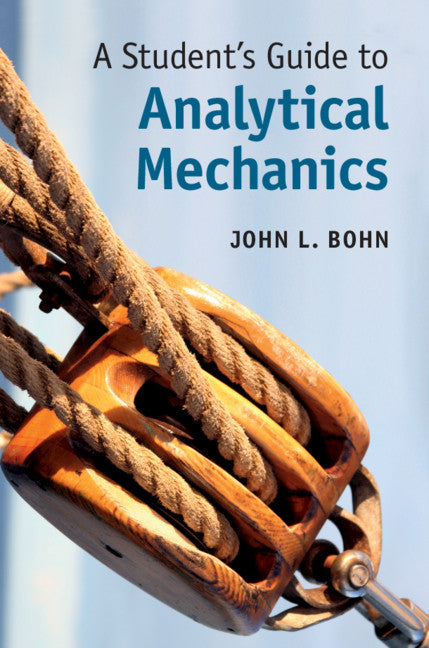Freshly Printed - allow 8 days lead
Couldn't load pickup availability
A Student's Guide to Analytical Mechanics
An accessible guide to analytical mechanics, using intuitive examples to illustrate the underlying mathematics, helping students formulate, solve and interpret problems in mechanics.
John L. Bohn (Author)
9781107145764, Cambridge University Press
Hardback, published 30 August 2018
214 pages, 50 b/w illus.
23.5 x 15.6 x 1.5 cm, 0.48 kg
'Bohn has written an excellent supplement for understanding analytical mechanics … A further reading section at the back provides useful directions for more study. Overall this will serve as an excellent supplement to a regular mechanics textbook.' S. Tripathi, Choice
Analytical mechanics is a set of mathematical tools used to describe a wide range of physical systems, both in classical mechanics and beyond. It offers a powerful and elegant alternative to Newtonian mechanics; however it can be challenging to learn due to its high degree of mathematical complexity. Designed to offer a more intuitive guide to this abstract topic, this guide explains the mathematical theory underlying analytical mechanics; helping students to formulate, solve and interpret complex problems using these analytical tools. Each chapter begins with an example of a physical system to illustrate the theoretical steps to be developed in that chapter, and ends with a set of exercises to further develop students' understanding. The book presents the fundamentals of the subject in depth before extending the theory to more elaborate systems, and includes a further reading section to ensure that this is an accessible companion to all standard textbooks.
Preface
Part I. Overview: 1. Why analytical mechanics?
2. Ways of looking at a pendulum
Part II. Equations of Motion: 3. Constraints and d'Alembert's principle
4. Lagrangian mechanics
5. Samples from Lagrangian mechanics
6. Hamiltonian mechanics
Part III. Methods of Solution: 7. Hamilton–Jacobi theory
8. Action-Angle variables
9. More applications of analytical mechanics
Further reading
Index.
Subject Areas: Engineering: general [TBC], Classical mechanics [PHD], Physics [PH]


